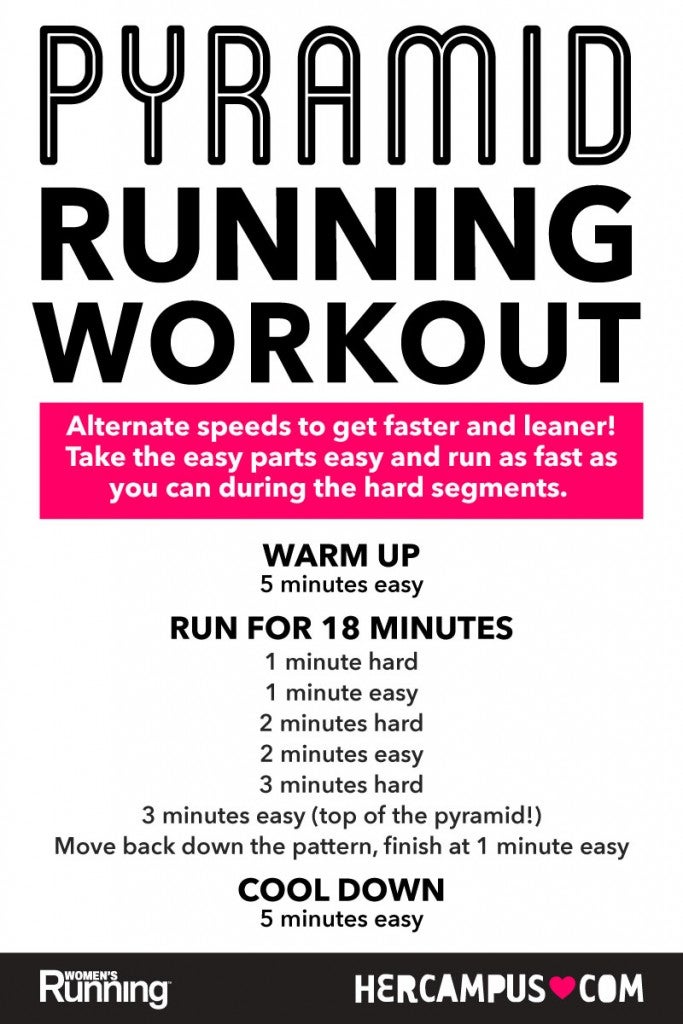Running Workout Tips: Boost Your Efficiency Today
Running Workout Tips: Boost Your Efficiency Today
Blog Article
Conquering Discomfort in Running: Techniques and Methods That Work
Pain is a common companion for lots of runners, commonly functioning as an obstacle to accomplishing their preferred goals. Nevertheless, with the best techniques and techniques, it is feasible to overcome and even prevent the pain related to running. By exploring various approaches such as understanding the different kinds of running pain, optimizing shoes and type, incorporating cross-training and stamina exercises, applying efficient healing methods, and preserving proper nourishment and hydration, joggers can potentially alleviate their discomfort and improve their overall running experience.
Recognizing Different Kinds Of Running Discomfort
:max_bytes(150000):strip_icc()/HIIT-treadmill-workout-promo-04629651f9fc4854a8afca1c29ba528a.jpg)
One more kind of running discomfort is joint pain, which can materialize as a sharp or achy discomfort in areas such as the knees, hips, or ankle joints (running strategy). Joint pain might be created by factors like incorrect running kind, overuse, or underlying problems like arthritis (this page). It is necessary to set apart in between muscular tissue discomfort and joint discomfort, as the latter may need clinical focus to stop additional injury
Recognizing the various kinds of running discomfort is vital for reliable monitoring and avoidance methods to make sure a risk-free and enjoyable running experience.
Proper Footwear and Running Kind
To enhance efficiency and decrease the risk of running-related injuries, picking proper footwear and keeping appropriate running kind are necessary elements for joggers of all levels. It is advised to select running footwear that are particularly created for the person's foot type, running stride, and the type of running activity they involve in.

Cross-Training and Stamina Exercises
Stamina exercises, like squats, lunges, and core exercises, play a crucial duty in maintaining muscle mass and improving running performance. They can deal with muscular tissue inequalities, improve agility, and enhance power outcome, all of which are important for running performance.
Integrating cross-training and stamina exercises right into a running program should be done purposefully. It is necessary to enable for adequate remainder between running sessions and cross-training tasks to stop overuse injuries. Additionally, concentrating on appropriate form and method during stamina exercises is key to optimizing their benefits and lowering the risk of injury. By including these elements right into a running routine, joggers can build a more powerful foundation, enhance performance, and appreciate an extra sustainable running experience.
Healing and Rest Techniques
Having actually developed the significance of cross-training and toughness exercises in a thorough running routine, interest can currently be guided in the direction of Healing and Relax Techniques as indispensable components for enhancing efficiency and decreasing the threat of injuries. (running workout)
Healing after running is crucial for muscle mass fixing and growth. Strategies such see this website as foam rolling, stretching, and massage assistance in lowering muscle discomfort and boosting flexibility. Appropriate remainder in between runs allows the body to recover and adapt to the physical stress and anxiety, avoiding overuse injuries.
Integrating energetic recuperation days right into a training schedule, where low-intensity activities like walking or biking are executed, can boost blood circulation and promote healing without putting excess stress on the muscular tissues. In addition, appropriate hydration and nourishment play an important function in the recovery procedure by replenishing lost fluids and nutrients.
Quality rest is another important facet of recovery that ought to not be ignored. During sleep, the body goes through repair service and regrowth procedures, adding to general physical and psychological well-being. By prioritizing recovery and rest methods, runners can preserve ideal performance levels and lower the chance of experiencing discomfort or injuries.
Nutrition and Hydration for Runners
Exactly how can runners optimize their performance via correct nourishment and hydration techniques? Nourishment and hydration are crucial elements of a runner's training regimen, playing an essential duty in performance, endurance, and recuperation. To boost performance, joggers ought to concentrate on eating a healthy diet plan that consists of carbohydrates, proteins, healthy and balanced fats, vitamins, and minerals. Carbohydrates provide power for running, while healthy proteins aid in muscle repair and recuperation. Healthy fats support overall wellness and assistance in absorbing essential nutrients. Ample hydration is likewise vital to preserve ideal performance, as also moderate dehydration can adversely affect running efficiency. Runners should consume water before, throughout, and after their runs to remain hydrated. Electrolytes, such as sodium and potassium, are also vital for maintaining liquid balance and muscular tissue function - running strategy. Additionally, timing dishes and snacks suitably before runs can assist prevent intestinal discomfort and give the required power for peak performance. By taking notice of their nourishment and hydration, runners can boost their endurance, accelerate recuperation, and perform at their finest.
Final Thought
To conclude, by recognizing the numerous kinds of running pain, using appropriate shoes, keeping proper running form, integrating cross-training and toughness workouts, focusing on recuperation and rest, and focusing on nutrition and hydration, runners can successfully get over discomfort and boost their efficiency. Applying these strategies and techniques can help runners protect against injuries, enhance their endurance, and inevitably appreciate an extra fulfilling running experience.
Report this page